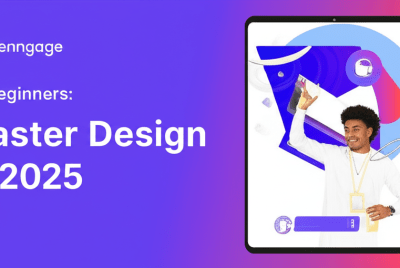You’ve likely experienced this scenario:
You are standing before a high-net-worth client, presenting your branding package.
“It’s 300k,” you state confidently — the same price your last, more budget-conscious client accepted.
You anticipate an easy sale. After all, what is 300k to someone worth billions?
To your surprise, the client responds:
“I can only do it for 100k.”
You wonder: Somebody call very dark man. I’ve just been taken advantage of?
If this ever happened then you’ve encountered what’s called the Rich Client Fallacy i.e the mistaken assumption that clients with greater financial resources will naturally pay higher fees.
In Crazy Rich Asians, we see three things :
- The ultra-wealthy fly on private jets,
- The ultra-wealthy spending millions on jewelry and same time
- The ultra wealthy eager eager to conserve more.
Wealth does not equate to indiscriminate spending. It often results in highly selective spending and aggressive negotiation especially in categories where perceived value is low. Creative services like design and branding are, unfortunately, among these categories.
Why Rich Clients Pay Less
1. They Have Countless Options
Wealthy clients typically have vast social networks and abundant professional connections. As a result, many designers both established and aspiring line up to offer services, sometimes even for free, in exchange for visibility or association.
2. Anchoring Bias and Perceived Value
According to behavioral economics, anchoring bias — the human tendency to rely heavily on an initial piece of information (the “anchor”) when making decisions plays a key role in how clients value creative services.
For design services, the internal anchor is typically much lower often rooted in past experiences of paying freelance or in-house designers nominal fees.
Hence, even when they can afford it, a 300k fee for a logo feels disproportionate in comaprisom to luxury items (cars, clothing, jewelry — think of the Crazy Rich Asians shopping scenes) .
3. Loss Aversion. The Millionaire Next Door Effect
Behavioral research indicates that loss aversion — the tendency to prefer avoiding losses over acquiring equivalent gains — is pronounced among high-net-worth individuals.
Thomas J. Stanley and William D. Danko, in The Millionaire Next Door, demonstrate that many self-made millionaires cultivate habits of frugality and financial discipline.
These clients may argue over seemingly small fees for creative services. It is not a question of affordability but of maintaining control over expenditures.
4. Social Opportunism Theory
Social Opportunism posits that wealthy individuals belive the less affluent tend to inflate prices to make a killing.
This dynamic leads to: Resistance to premium pricing without substantial justification
In short, wealthy clients are acutely sensitive to social proof in pricing.
How To Beat the Game — And Get Paid What You Deserve
1. Presentation Matters
To many affluent clients, design and art appear cheap unless positioned strategically.
Here, the framing effect another cognitive bias becomes crucial… The way you present your offer directly influences its perceived value.
Recommendations:
- Dress professionally and appropriately
- Speak as a team (“we,” not “I”) to convey organizational depth
- Showcase a premium portfolio
- Emphasize strategic business outcomes, not just visual outputs
Your framing must align with your desired price point.
2. Step Up Your Image
Visual signals of success significantly shape perceived value — an insight validated by both marketing and psychology research.
If you appear premium, clients are more likely to perceive your services as premium.
Invest in:
- high-quality clothing
- professional grooming
- confident body language
First impressions are paramount particularly when engaging with clients attuned to social cues.
3. Breakdown Your Pricing
Avoid presenting your fee as an undifferentiated sum:
“500k for a logo.”
This leaves room for price insensitivity where clients fail to understand what goes into the work.
Instead, break it down:
- Brand discovery and ideation
- Logo vectorization and finalization
- Color palette and typography guidelines
- Tone of voice and imagery guidelines
- Brand collateral mockups
Making the process visible helps anchor the value in time and expertise not just deliverables.
4. Be Ready To Cut Smartly Or Walk Away
Wealthy clients are seasoned negotiators.
At times, strategic flexibility offering a slight concession can be worthwhile if the project provides access to valuable networks or future opportunities.
However, beware the foot-in-the-door phenomenon: accepting an initial low fee makes it difficult to command higher rates later, both with the client and their peer network.
If negotiations fall below a level that sustains your professional positioning, it is advisable to walk away.
Why?:
- The price you accept will circulate within the client’s social network
- Their peers will expect the same rates
- Your long-term brand equity could suffer
Final Thought: Aim High
Consider this: the world’s most expensive logo redesign belongs to British Petroleum (BP). The total rebranding project reportedly cost $211 million, with the logo itself valued at approximately $1 million.
What differentiates these projects? Isnt just the amount of wealth in the purse of these clients.
Ask yourself:
- Can I present my value in a manner that commands the price I seek?
- Am I prepared to strategically manage expectations with wealthy clients?
The answer to this is yes because they can then no they will not !
Commanding high fees requires skill in
- Understanding and communicating the business impact of design
- Building the confidence and infrastructure to justify premium pricing
- Understanding client psychology
Master these principles and avoid the Rich Client Fallacy. The next time you face a client straight out of Crazy Rich Asians, you’ll precisely how to proceed.

